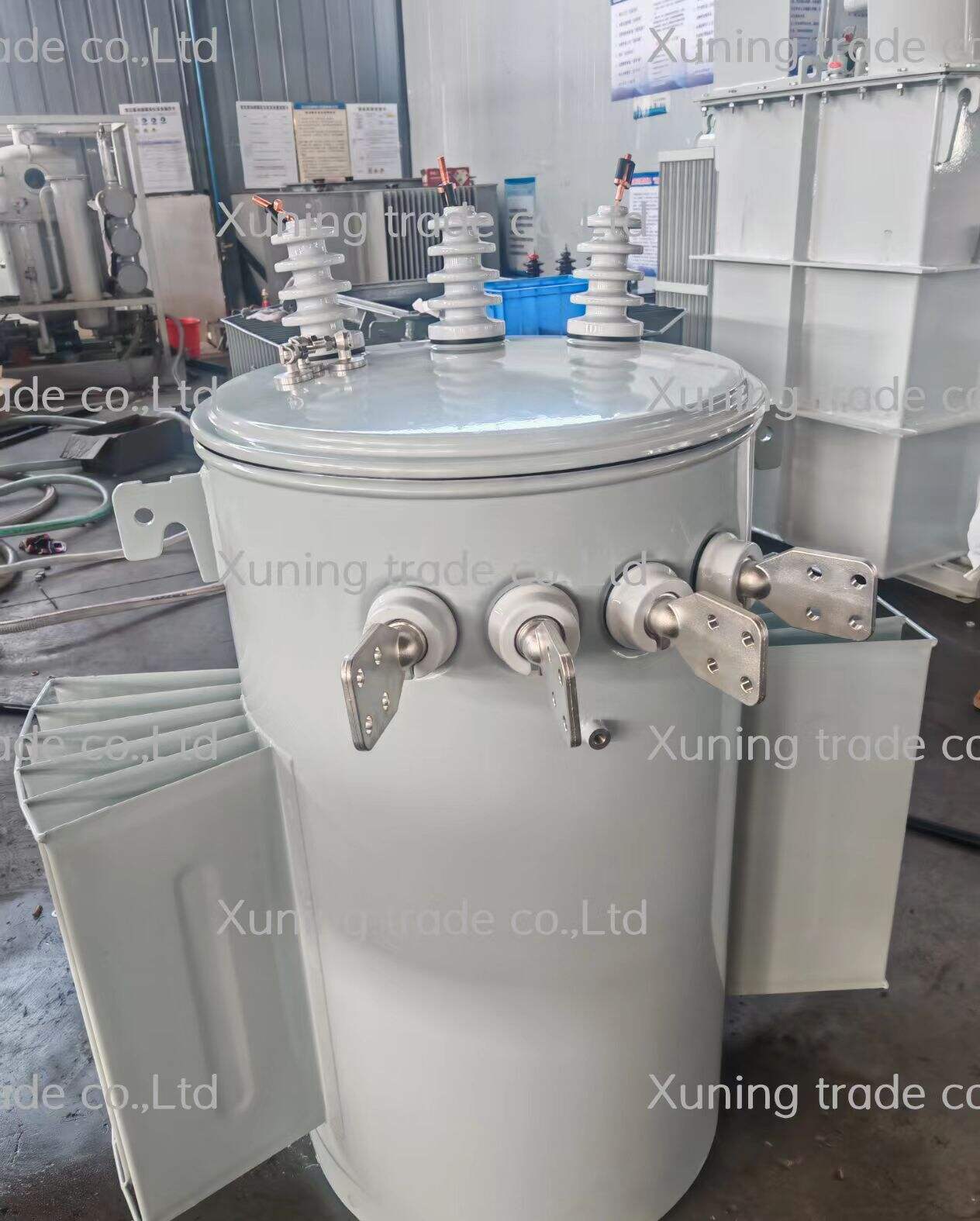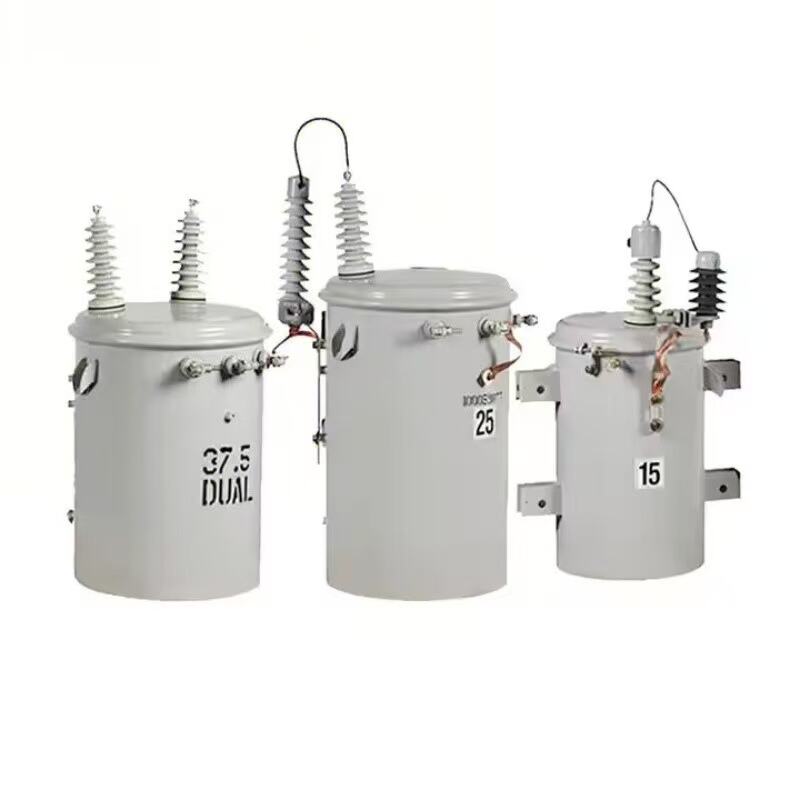Understanding the Fundamental Distinctions Between Transformer Types
The electrical power industry relies heavily on transformers to ensure efficient power transmission and distribution across vast networks. Distribution transformers and power transformers serve as crucial components in the electrical grid, each playing distinct roles in voltage transformation and power delivery. While both types operate on the same basic electromagnetic principles, their design specifications, applications, and operational characteristics set them apart in significant ways.
In today's evolving energy landscape, the distinction between distribution transformers and power transformers becomes increasingly important as power demands grow and grid infrastructure expands. Understanding these differences is essential for engineers, utility companies, and industry professionals to make informed decisions about equipment selection and system design.
Core Design and Construction Features
Physical Size and Configuration
Distribution transformers are generally more compact and lighter than their power transformer counterparts. Typically ranging from 5 kVA to 2500 kVA, distribution transformers are designed for easier installation and maintenance in residential and commercial areas. Their smaller size allows them to be mounted on utility poles or placed in underground vaults without requiring extensive foundation work.
Power transformers, conversely, are substantially larger and heavier, often weighing several hundred tons. These units are designed to handle massive power loads, commonly ranging from 2500 kVA to several hundred MVA. Their size necessitates dedicated substations with robust foundations and specialized cooling systems.
Core Material and Winding Construction
The core construction of distribution transformers typically utilizes silicon steel laminations designed for optimal performance at lower voltage levels. The windings are usually made from aluminum or copper, with simpler insulation systems suitable for their operating conditions. These transformers often employ a shell-type or core-type design optimized for cost-effectiveness and reliability in distribution networks.
Power transformers feature more sophisticated core designs, using premium-grade electrical steel and advanced core geometries to minimize losses at high voltage levels. Their windings incorporate complex insulation systems and specialized materials to withstand extreme electrical and mechanical stresses.
Operational Characteristics and Performance
Voltage Transformation Ranges
Distribution transformers typically operate in the final stages of the power distribution network, converting medium voltage levels (ranging from 4.16 kV to 33 kV) to utilization voltages (120V to 600V). These voltage ranges are specifically suited for end-user applications in homes, businesses, and light industrial facilities.
Power transformers handle much higher voltage transformations, often operating between 138 kV to 765 kV or even higher in specialized applications. They serve as the backbone of power transmission systems, facilitating long-distance power transfer between generating stations and distribution networks.
Efficiency and Loss Management
Distribution transformers are designed with a focus on maintaining consistent efficiency under varying load conditions. Their design prioritizes minimizing no-load losses since these units often operate at partial capacity. Modern distribution transformers incorporate advanced core materials and designs to achieve energy efficiency standards while balancing manufacturing costs.
Power transformers emphasize maximum efficiency at full load operation, with sophisticated cooling systems and loss management techniques. They employ advanced features like tap changers, monitoring systems, and specialized cooling methods to maintain optimal performance under heavy loading conditions.

Application and Installation Considerations
Environmental Adaptability
Distribution transformers are built to withstand diverse environmental conditions as they are installed in various locations, from urban areas to remote rural settings. They often feature sealed tank designs to prevent moisture ingress and maintain reliable operation in challenging weather conditions. These units can be pole-mounted, pad-mounted, or installed in underground vaults, offering flexibility in deployment options.
Power transformers require carefully controlled environments within substation compounds. Their installation demands extensive site preparation, including oil containment systems, fire protection measures, and specialized foundations. Climate control and monitoring systems are essential to maintain optimal operating conditions.
Maintenance Requirements
Distribution transformers are designed for minimal maintenance, often operating for decades with limited intervention. Their simpler construction and lower operating stresses contribute to enhanced reliability and reduced maintenance needs. Routine inspections typically focus on external conditions and basic electrical parameters.
Power transformers demand comprehensive maintenance programs involving regular oil testing, dissolved gas analysis, and detailed inspection of cooling systems and tap changers. Their critical role in power transmission networks necessitates continuous monitoring and preventive maintenance to ensure reliable operation.
Economic and System Integration Aspects
Cost Considerations
Distribution transformers represent a balance between initial cost and operational efficiency. Their standardized designs and mass production capabilities help maintain reasonable purchase prices while meeting performance requirements. Utilities often focus on total ownership costs, including energy losses over the equipment's lifetime.
Power transformers involve substantial capital investment, with costs driven by their size, complexity, and specialized features. The economic evaluation must consider not only the initial purchase price but also installation costs, maintenance requirements, and potential impact of failure on system reliability.
Grid Integration and Smart Features
Modern distribution transformers increasingly incorporate smart grid capabilities, including monitoring sensors and communication interfaces. These features enable better load management, power quality monitoring, and integration with advanced metering infrastructure, supporting the evolution toward smarter power distribution networks.
Power transformers play a critical role in grid stability and control, featuring sophisticated monitoring and control systems. They often include advanced protection schemes, dynamic voltage regulation capabilities, and real-time condition monitoring to ensure reliable power transmission.
Frequently Asked Questions
What is the typical lifespan of distribution transformers compared to power transformers?
Distribution transformers typically have a service life of 20-30 years under normal operating conditions, while power transformers can last 30-40 years or more with proper maintenance. The actual lifespan depends on factors such as loading patterns, environmental conditions, and maintenance practices.
Can distribution transformers be used in place of power transformers?
No, distribution transformers cannot replace power transformers due to significant differences in voltage ratings, power handling capacity, and design specifications. Each type is optimized for its specific role in the power system, and substitution would result in operational failures and safety hazards.
How do cooling systems differ between distribution and power transformers?
Distribution transformers typically use simpler cooling methods like natural oil circulation and air cooling (ONAN), while power transformers employ more complex cooling systems including forced oil and forced air cooling (ONAF/OFAF), or even water cooling in some cases, due to their higher power handling requirements.




